10 Great Places to Live, 2013
What makes a city a great place to live?
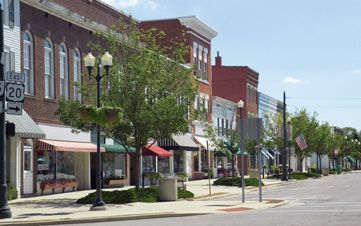
What makes a city a great place to live? By our definition, good jobs, reasonably priced homes, decent schools, great health care and manageable size are all essential parts of the mix. We started with metro areas that have a population of 1 million or less and came up with a list of cities that met those criteria.
Then we whittled the list to ten cities and sent Kiplinger's reporters to each one to find the extra ingredients that make them special: say, a gorgeous setting, a green sensibility, a brainiac population or a rah-rah sports culture. Want to see a moose on your daily walk? They're a common sight in our #9 city. Rub elbows with celebrities? A surprising number of them call our #4 city home. There's something for everyone in our picks for 10 great places to live.
Disclaimer
Population figures are from the 2010 U.S. Census. Unemployment rates are from the Bureau of Labor Statistics; rates are preliminary data as of May 2013 and aren't seasonally adjusted. The cost-of-living data, also from BLS, is as of March 31, 2013; national average = 100. Sources for home values include Alaska Multiple Listing Service, Arkansas Association of Realtors, C2ER, Coldwell Banker Iowa Association of Realtors, New York Association of Realtors, RealEstateMontana.com, Real Estate Center at Texas A&M University, Santa Fe Association of Realtors, South Carolina Association of Realtors and Vermont Realtors. National average for median home value is as of June 30 from Clear Capital. National average for median household income per the U.S. Census’s 2011 American Community Survey.

10. Dubuque, Iowa
- Population: 93,653 (metro area)
- Unemployment rate: 4.2% (natl. avg., 7.6%, seasonally adjusted)
- Cost-of-living index: NA (natl. avg., 100)
- Median household income: $49,663 (natl. avg., $52,762)
- Median home value: $141,500 (natl. avg., $200,000)
- What the locals love: Watching barges navigate Lock and Dam #11.
Thirty years ago, Dubuque was a struggling riverfront town with a failing meatpacking plant, unemployment reaching 23% and a seedy post-industrial waterfront. Today, it houses a Smithsonian-affiliated museum and a convention center along with thriving businesses and shops in its restored 19th-century downtown. Longtime manufacturer John Deere anchors the economy, but IBM, Prudential Retirement, three private liberal arts colleges, Mercy Medical Center and Mississippi River-based tourism also contribute to the robust job market.
Housing in Dubuque is affordable, with a four-bedroom home in a historic neighborhood ranging in price from $199,000 to $275,000. For a two-bedroom apartment in the historic Caradco building, you'll pay about $1,000 per month in rent.
Iowa has a tradition of solid public schools, with one of the highest four-year graduation rates in the country, and Dubuque is no exception, right down to a strong parochial-school system. Locals enjoy their free time attending shows and roller-derby matches at the Five Flags Center, cheering on the local junior hockey team, the Fighting Saints, and biking the Heritage Trail out to Dyersville, where Field of Dreams was filmed.
RESOURCE: Find the best, latest mortgage rates in the Dubuque area.
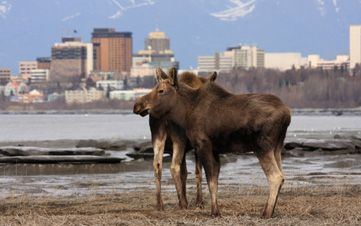
9. Anchorage, Alaska
- Population: 380,821 (metro area)
- Unemployment rate: 5.1%
- Cost-of-living index: 126.5
- Median household income: $74,271
- Median home value: $332,975
- What the locals love: Raising a glass with friends at the Snow Goose bar and attending a Saturday market for local artwork.
Alaska's biggest city offers a vibrant economy, great schools, low taxes, and incomparable beauty. Melting ice creates waterfalls that transform the mountains each spring. But there's no need to leave the city to commune with nature. Moose wander the streets. Beluga whales sail through Cook Inlet twice daily. Long summer days give residents ample time to hit the many surrounding hiking trails.
Being this close to Mother Nature isn't for everyone. Residents must watch for bears and trek carefully through the mudflats that emerge in low tide. In winter, when there's just five hours of daylight, the locals use dawn-simulating lamps. But Anchorage boasts surprising diversity, with nearly 100 languages spoken in the public schools. Parents rave about the schools' small class sizes and innovative curriculum. Cultural facilities include a performing arts center and Cyrano's Off Center Playhouse.
The cost of living and housing is high, but so is the average household income, and the jobless rate is low. Within a ten-hour flight of most major cities, Anchorage is a strategic location for the military and companies such as FedEx. Oil and tourism are also top employers. Oil revenues provide every resident with an annual dividend payment -- $878 in 2012. Property taxes are low.
RESOURCE: Find the best, latest mortgage rates in the Anchorage area.

8. Ithaca, New York
- Population: 101,564 (metro area)
- Unemployment rate: 5.1%
- Cost-of-living index: 102.9
- Median household income: $49,789
- Median home value: $215,000
- What the locals love: The food scene including Just a Taste -- a wine and tapas bar with a menu that changes daily -- and cheering on Cornell's men's ice hockey team.
It may be temporary home to 28,000 students, but this college town is a great place to put down roots, too. Education is central to Ithaca's identity, anchored by Cornell University, which is the largest employer in the county, and Ithaca College. University jobs, start-ups fueled by Cornell's brainpower, and tourism generated by the more than 100 nearby wineries have sustained economic growth while other upstate New York communities have fallen on hard times.
On any given Saturday, you'll see locals shopping at the Ithaca Farmers' Market or taking in a performance at one of the local theaters. The city has more restaurants per capita than New York City. Ithaca’s natural environment -- gorges, waterfalls and Cayuga Lake -- not only inspires the motto "Ithaca Is Gorges," but gives the locals good reason (beyond cabin fever) to head outdoors after the area's long, cold and snowy winters. Hiking, biking and sailing are popular summertime activities.
Downtown Ithaca is being transformed by new mixed-use developments and a hotel expansion; Ithaca Commons, a downtown pedestrian mall, is undergoing a redesign. You'll pay more than the median home price of $215,000 as you get closer to the city center and Cayuga Lake. The public schools are generally well regarded.
RESOURCE: Find the best, latest mortgage rates in the Ithaca area.

7. Morgantown, West Virginia
- Population: 129,709 (metro area)
- Unemployment rate: 4.2%
- Cost-of-living index: 102.7
- Median household income: $42,100
- Median home value: $161,000
- What the locals love: Rowing lessons at the boathouse in the city's Wharf District and dining at outdoor cafés along the Mon River Rail-Trail.
Even during the economic downturn of 2008-2010, Morgantown was one of the few metropolitan areas in the country that saw job and income growth, thanks mostly to Mylan Pharmaceuticals, a leading manufacturer of generic drugs, and West Virginia University (WVU) and the WVU Healthcare system. The city's unemployment rate remains well below the national average.
Morgantown offers a host of cultural activities, from Broadway shows to art exhibitions. Outdoor recreation is abundant. Locals head to the Mon River Rail-Trail to run or bike, or drive 13 miles to Coopers Rock State Forest for 50 miles of hiking trails. Unlike much of West Virginia, Morgantown, located in the north-central part of the Mountain State, is within a few hours' drive of several major cities, including Pittsburgh and Washington, D.C. Residents don't need to leave town, though, for good health care. WVU Hospitals are highly rated in specialties including cancer and cardiology.
Living alongside 30,000 college students can have its drawbacks. During the school year, traffic through town starts backing up around 2 p.m. And if you're not a fan of Mountaineer football, don't tell. Housing costs in Morgantown are above-average for the state -- expect to pay $200,000 or more for an updated, three-bedroom house. But local property taxes are low. And local schools such as Suncrest Primary and Middle schools, Cheat Lake Elementary and Morgantown High School are top-rated.
RESOURCE: Find the best, latest mortgage rates in the Morgantown area.

6. Billings, Montana
- Population: 158,050 (metro area)
- Unemployment rate: 3.7%
- Cost-of-living index: NA
- Median household income: $49,952
- Median home value: $207,000
- What the locals love: The romantic Cafe Italia and breweries on Montana Avenue. Plus, visiting the Western Heritage Center for kid-friendly programs.
Sure, it’s beautiful. And yes, it’s a short trip from Yellowstone National Park. But Billings is much more than a tourist destination. Dotted with oil refineries and bisected by a medical corridor, it is a regional economic hub with low unemployment, affordable housing and an active, outdoorsy community. Major employers include St. Vincent and Billings Clinic hospitals, First Interstate Bank, ExxonMobil and ConocoPhillips. Montana State University and Rocky Mountain College add additional jobs as well as 6,000 students to the mix.
Downtown is a work in progress as the city rehabs abandoned buildings and transforms lots into pocket parks and living spaces. Folks from neighboring communities come into town for the shopping and to relax at the breweries and quiet bistros along Montana Avenue.
Winters? Locals insist that they live in the "banana belt," a balmy micro-climate surrounded by Rocky Mountain cold. Thanks to sudden temperature swings, you can be shoveling the walkway before breakfast and golfing after lunch, they say. In summer, when they aren't kayaking the Yellowstone River or biking along the rimrocks, they're gathering at Dehler Park to cheer the Billings Mustangs, a farm team for the Cincinnati Reds. Billings lacks a sales tax to fund public projects, but a recent $2.3 million levy will help reduce overcrowding in the schools and update classroom technology.
RESOURCE: Find the best, latest mortgage rates in the Billings area.

5. Columbia, South Carolina
- Population: 768,821 (metro area)
- Unemployment rate: 6.9%
- Cost-of-living index: 96.0
- Median household income: $48,766
- Median home value: $147,000
- What the locals love: Outdoor living, Southern hospitality and South Carolina-grown items on menus at local restaurants, such as the Oak Table.
Shaded by towering pines and bursting with hospitality, Columbia is as sweet as the area's ever-present tea, thanks to the diversified economy and central location in the Palmetto State. As the state capital and home to Fort Jackson, the largest military training base in the country, Columbia has plenty of government jobs. It also boasts six colleges, including the flagship University of South Carolina. Manufacturing and insurance companies add to the mix, and seven major hospitals provide both jobs and top-notch medical care. This balanced approach has yielded robust economic growth in the past few years.
Set halfway between the mountains and the Atlantic and within two hours of Charlotte and Charleston, Columbia's location is a big draw. But the city has its own attractions, including an art museum, a children's museum and Riverbanks Zoo, rated one of the top ten in the country. Three rivers converge downtown, making a bike ride along Riverwalk or an afternoon of tubing always a recreational draw. There are also boating and water sports on nearby Lake Murray. In August, the city lives up to its motto, "famously hot," but annual temperatures average around 65 degrees.
Reasonably priced housing and good schools (including some that are tops in the state) make the Columbia area ideal for families. A three-bedroom, two-bath home in the leafy Shandon neighborhood averages $250,000.
RESOURCE: Find the best, latest mortgage rates in the Columbia area.

4. Santa Fe, New Mexico
- Population: 144,170 (metro area)
- Unemployment rate: 5.0%
- Cost-of-living index: NA
- Median household income: $53,698
- Median home value: $379,000
- What the locals love: The diversity, the climate and the free "Music on the Hill" jazz concert series in the summer.
Wander among the pueblo-style structures of Santa Fe's downtown on a sunny day and you'll see craftspeople spread their wares outside the 400-year-old Palace of the Governors, now part of the New Mexico History Museum. Or you can stop in at restaurants such as The Shed, which serves dishes reflecting Spanish and Native American influences. Art galleries line Canyon Road.
Locals enjoy free outdoor concerts at the central plaza bandstand, and six miles from the heart of town, the outdoor amphitheater enthralls opera-goers. Outdoor enthusiasts can hit nearby hiking and biking trails or head to the ski slopes at the Sangre de Cristo Mountains, about a half-hour drive from downtown. Getting around on foot can be a challenge, but efforts are under way to improve sidewalks and clean up sections between popular attractions.
Tourism, government (Santa Fe is the state capital of the Land of Enchantment) and the Los Alamos National Laboratory dominate the local economy; and the health care sector is set to grow. The city also fosters programs to encourage entrepreneurship in areas such as green technology and new media, to diversify the economy and to encourage young people to stick around. Santa Fe's cost of living is a little higher than in other parts of the state. Many of the public schools are underperformers, so some families choose to live in districts with better schools or send kids to one of 43 private schools in Santa Fe County. But the setting truly is enchanting.
RESOURCE: Find the best, latest mortgage rates in the Sante Fe area.
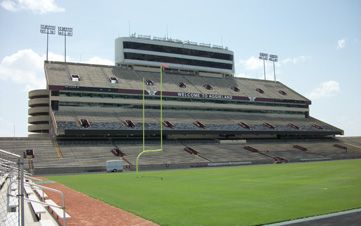
3. Bryan-College Station, Texas
- Population: 228,660 (metro area)
- Unemployment rate: 5.7%
- Cost-of-living index: NA
- Median household income: $37,899
- Median home value: $161,200
- What the locals love: Guest lectures at the George Bush Presidential Library and Museum; hiking, fishing, horseback riding; and, of course, college football.
Welcome to Aggieland. College Station and the adjoining community of Bryan represent a cultural, economic and educational powerhouse in the bucolic southeastern part of the Lone Star State. Brimming with Texas hospitality and steeped in tradition, these cities attract and retain not just graduates of Texas A&M University, but a host of other young professionals, families and retirees. Big draws are the highly educated workforce, exemplary public school systems, low crime, parks and golf courses, excellent hospitals and overall affordability. Oh, and did we mention college sports?
The main driver of all this energy is Texas A&M, whose research facilities provide plenty of jobs and business opportunities to the region, including to graduates who stick around. Big tech firms have moved into the area, too: Motorola recently tapped A&M as one of eight universities (including Caltech, Harvard and MIT) for a research partnership. Last year, the A&M System received a $286 million contract for a federal center that, in part, develops vaccines against influenza. The area expects to add 1,000 jobs in the next five years.
The biomedical corridor bordering Bryan also has boosted the economy, allowing the city to renovate landmarks and add retail and restaurants. And then there's Aggie football. A $450 million renovation of the 86-year-old Kyle Field will bring the total number of seats to 102,500, making it the biggest stadium in the Southeastern Conference, which A&M joined last year. Summers can be brutal, along with autumn game-day traffic. But nobody is complaining in Aggieland.
RESOURCE: Find the best, latest mortgage rates in the Bryan-College Station area.

2. Burlington, Vermont
- Population: 211,261 (metro area)
- Unemployment rate: 3.5%
- Cost-of-living index: 122.5
- Median household income: $60,552
- Median home value: $265,500
- What the locals love: Farm-to-table food at spots such as the Farmhouse Tap & Grill and Skinny Pancake creperie, and easy access to ski slopes.
Hugging the eastern shore of Lake Champlain, Burlington offers a cozy New England feel and stunning beauty, plus a vibrant and varied economy. The city is home to the University of Vermont and regional health care provider Fletcher Allen. IBM is nearby and other tech companies are growing, too. Result? Plentiful jobs and low unemployment.
Green is important in the Green Mountain State: Burlington claims the first local utility in the country to focus on improving energy efficiency in the community. Eco-friendly product maker Seventh Generation, solar companies Draker and AllEarth Renewables, and wind supplier NRG Systems round out the area's green offerings. Mayor Miro Weinberger says the goal is to power the city fully with renewable energy -- and Burlington isn't that far off. Downtown Burlington has the Church Street Marketplace, one of the most successful pedestrian malls in the country. Ten years ago, two inner-city schools were failing. The city turned both into highly sought-after magnet schools.
Tucked between the Adirondacks and the Green Mountains, Burlington boasts stellar vistas year-round. In warm weather, residents enjoy hiking and biking -- an eight-mile bike path runs along the lake. As for the winter, yes, it's cold, but you’re just half an hour from the ski slopes.
RESOURCE: Find the best, latest mortgage rates in the Burlington area.

1. Little Rock, Arkansas
- Population: 699,757 (metro area)
- Unemployment rate: 6.6%
- Cost-of-living index: 99.1
- Median household income: $47,731
- Median home value: $195,762
- What the locals love: The annual Riverfest performing arts celebration, the paved trail system along the Arkansas River, the mild winters and lack of traffic.
Why is Little Rock tops on our list? It offers far more than a lovely setting in rolling hills between the Ouachita Mountains and the Arkansas River. It is the capital of Arkansas and its largest city, as well as the state center of business, health care and culture. It has the amenities of a larger city but is small enough that you can feel part of the diverse community. Residents of the eclectic Hillcrest neighborhood mingle, shop and listen to street music on the first Thursday of each month. Young professionals meet with company leaders as part of Create Little Rock, a networking program. Volunteerism by retirees is quite high here.
Cultural offerings include museums and fine-art galleries, a repertory theater, a symphony orchestra, a performing arts center, and the William J. Clinton Presidential Library. Downtown, you can roam the 33-acre Riverfront Park. Boating and fishing add to the recreational scene.
Major employers include the state government, two major universities, Caterpillar and IT company Acxiom. Housing costs are unusually affordable. You can find a three-bedroom, 2,000-square-foot house for as little as $169,900 in a family-friendly neighborhood in West Little Rock. And residents can get first-rate medical care at Little Rock's several hospitals. The city still has some underperforming public schools, but Little Rock Central High School -- the site of desegregation battles in 1957 -- is now top-ranked, and the local efforts to improve education continue.
RESOURCE: Find the best, latest mortgage rates in the Little Rock area.
Get Kiplinger Today newsletter — free
Profit and prosper with the best of Kiplinger's advice on investing, taxes, retirement, personal finance and much more. Delivered daily. Enter your email in the box and click Sign Me Up.
-
 Stock Market Today: Stocks Are Mixed Before Liberation Day
Stock Market Today: Stocks Are Mixed Before Liberation DayMarkets look forward to what comes with the reordering of 80-year-old global trade relationships.
By David Dittman Published
-
 Stagflation: What It Is and Why Retirees Should Care
Stagflation: What It Is and Why Retirees Should CareStagflation — the economic bogeyman of the 1970's — may return to the US. Here's what it could mean to your retirement.
By Donna Fuscaldo Published
-
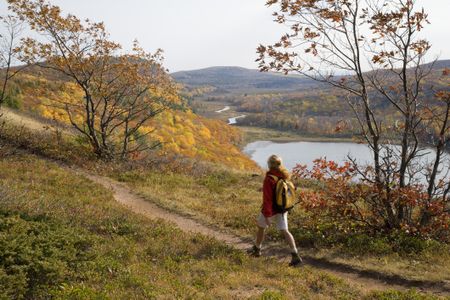 12 Great Places to Retire in the Midwest
12 Great Places to Retire in the MidwestPlaces to live Here are our retirement picks in the 12 midwestern states.
By Stacy Rapacon Published
-
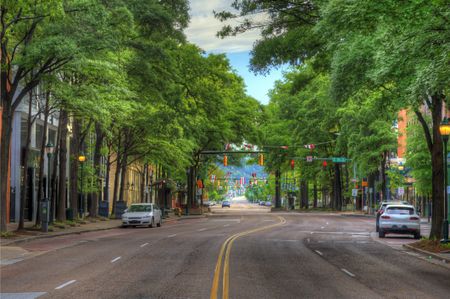 10 Cheapest Small Towns to Live In
10 Cheapest Small Towns to Live InThe cheapest small towns might not be for everyone, but their charms can make them the best places to live for plenty of folks.
By Dan Burrows Published
-
 Best Cold Weather Places to Retire
Best Cold Weather Places to RetirePlaces to live Some like it hot; others not so much. Here are the 12 best places to retire if you can't stand the heat.
By Stacy Rapacon Published
-
 The Cheapest Places To Retire in the US
The Cheapest Places To Retire in the USWhen you're trying to balance a fixed income with an enjoyable retirement, cost of living is a crucial factor to consider.
By Stacy Rapacon Published
-
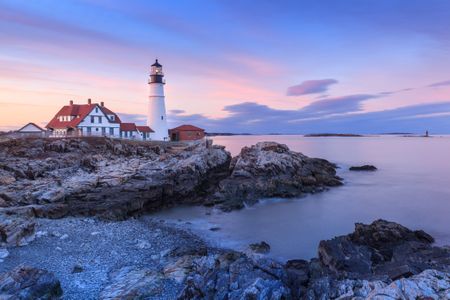 The Six Best Places to Retire in New England
The Six Best Places to Retire in New Englandplaces to live Thinking about a move to New England for retirement? Here are the best places to land for quality of life, affordability and other criteria.
By Stacy Rapacon Last updated
-
 Best Cold Weather Places to Retire
Best Cold Weather Places to Retireplaces to live Some like it hot; others not so much. Here are the 12 best places to retire if you can't stand the heat.
By Stacy Rapacon Last updated
-
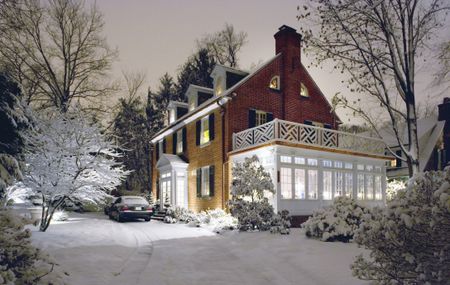 15 Ways to Prepare Your Home for Winter
15 Ways to Prepare Your Home for Winterhome There are many ways to prepare your home for winter, which will help keep you safe and warm and save on housing and utility costs.
By Donna LeValley Last updated
-
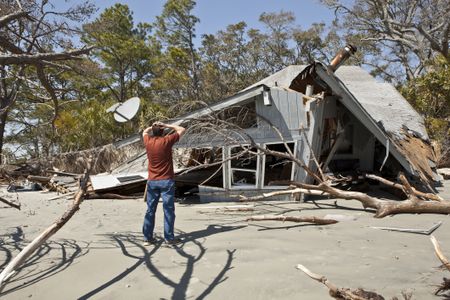 Hurricane Insurance Claims: 10 Things You Need to Know
Hurricane Insurance Claims: 10 Things You Need to KnowBecoming a Homeowner Hurricane damage? Know what your insurance will and won't cover to make the most of your policy if you need to file a claim.
By Kimberly Lankford Last updated
